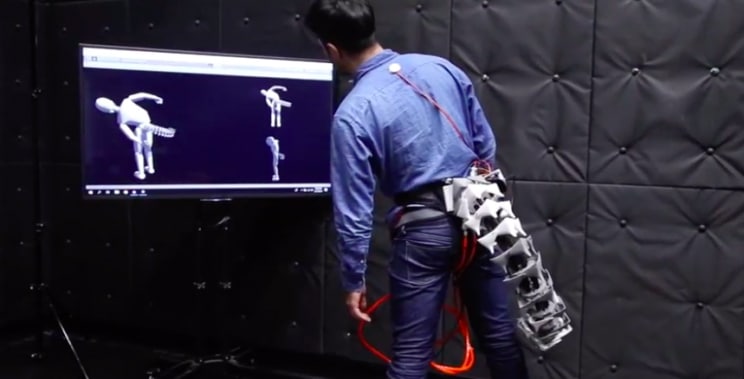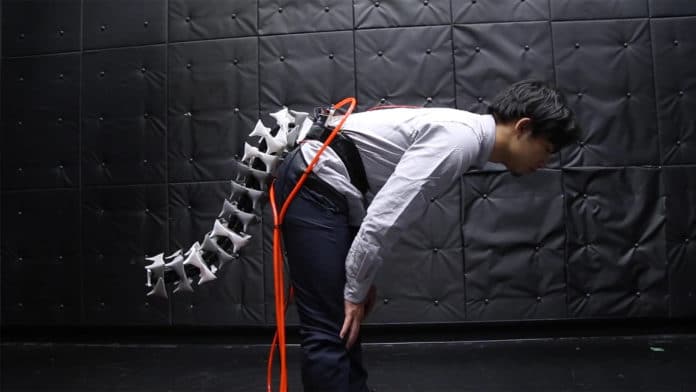For most animals, the tail serves as a way to maintain balance or to grip objects while navigating through small spaces. Humans don’t have such things, so scientist at the Keio University in Japan have developed an animated wearable tail that promises to improve user’s balance and agility.
Named Arque, the artificial biomimicry-inspired tail is made up of multiple interlocking vertebrae, with pneumatic artificial muscles running through the cavity catering for movement. This modular design means that additional segments could be added, or removed, to fit the different heights, weights of the wearer.
The tail itself is powered using compressed air, which causes four artificial muscles to contract or expand in order to make the tail move in eight different directions. Currently, it requires an external air compressor, but the team says this could be removed in the future as other power systems are developed.

The Arque is 71 cm (28 in) long and 11.5 cm (4.5 in) wide and weighs 1.6 kg (3.5 lb). A body tracker worn on the upper body of the user estimates the center of gravity and the tail is positioned accordingly.
Some animated robotic tails are already manufactured, that you can control using your smartphone. Those are mostly designed for cosplay purposes, but the Arque wearable is intended as a serious tool for work. It is mainly created to improve balance and movement, specifically when moving large objects or balancing our body weight when trying to reach high and sometimes heavy articles.
Besides, it could be useful for the elderly with limited mobility and balance. Also, researchers hope it can be used in virtual reality environments, not just for equilibrium maintenance.
The paper about their innovation is available online now.
